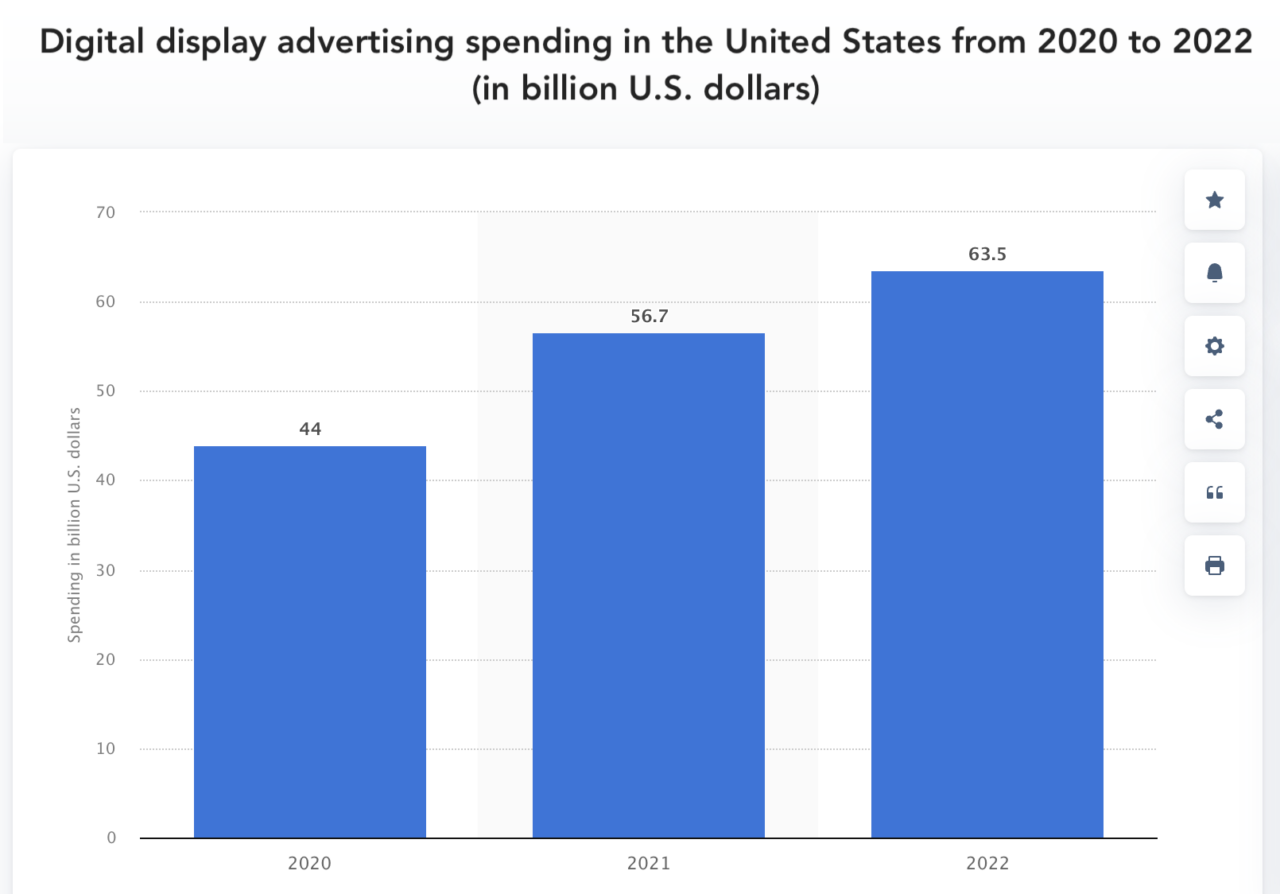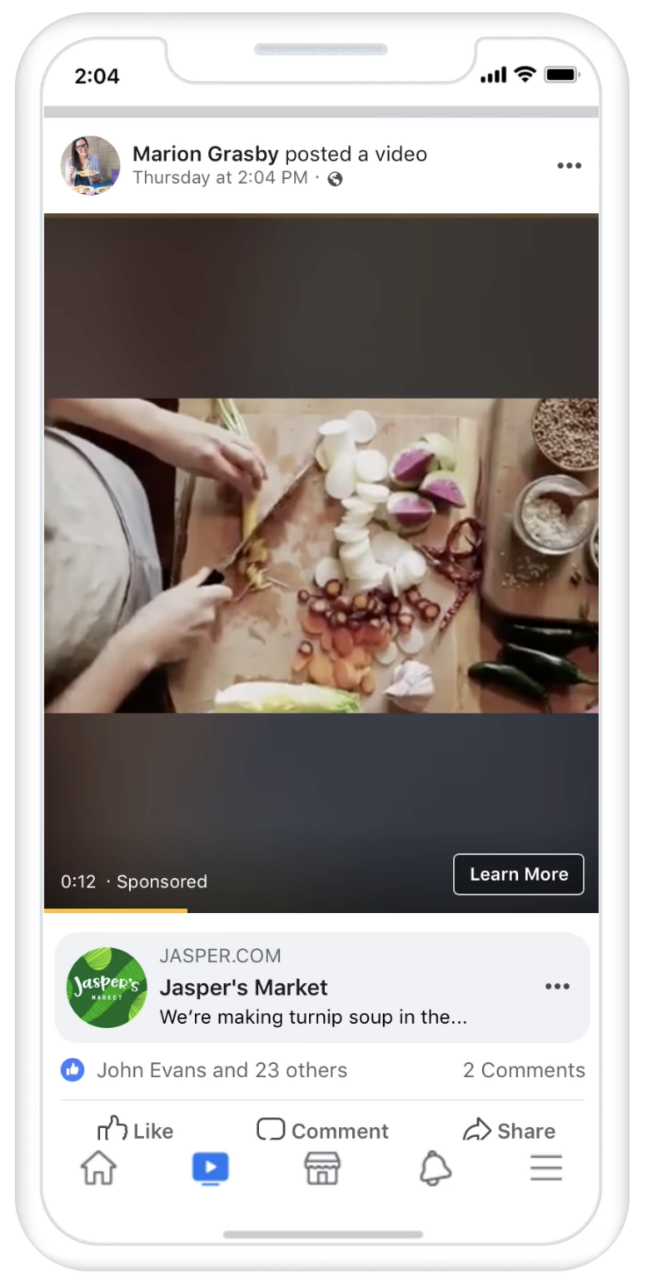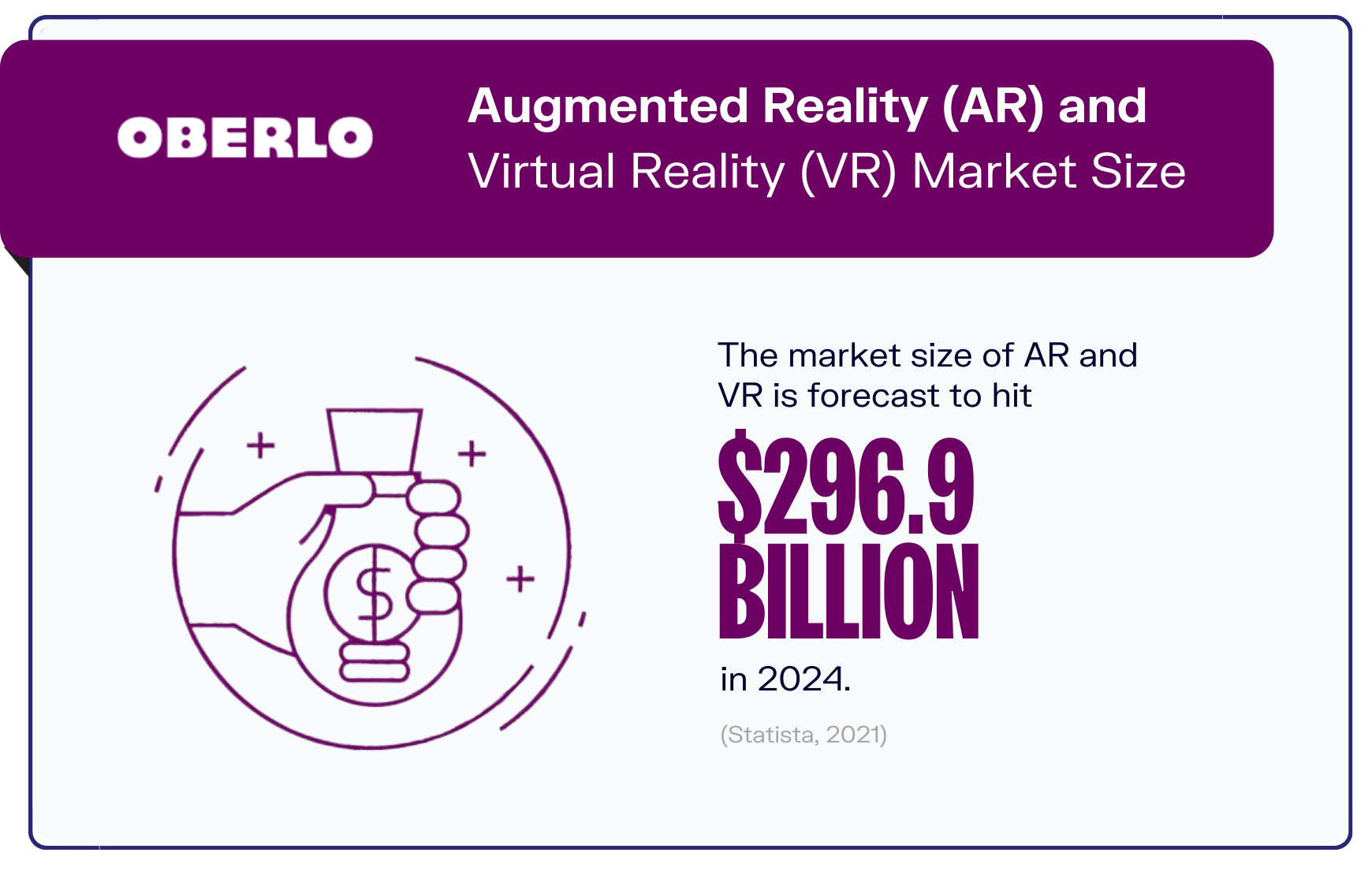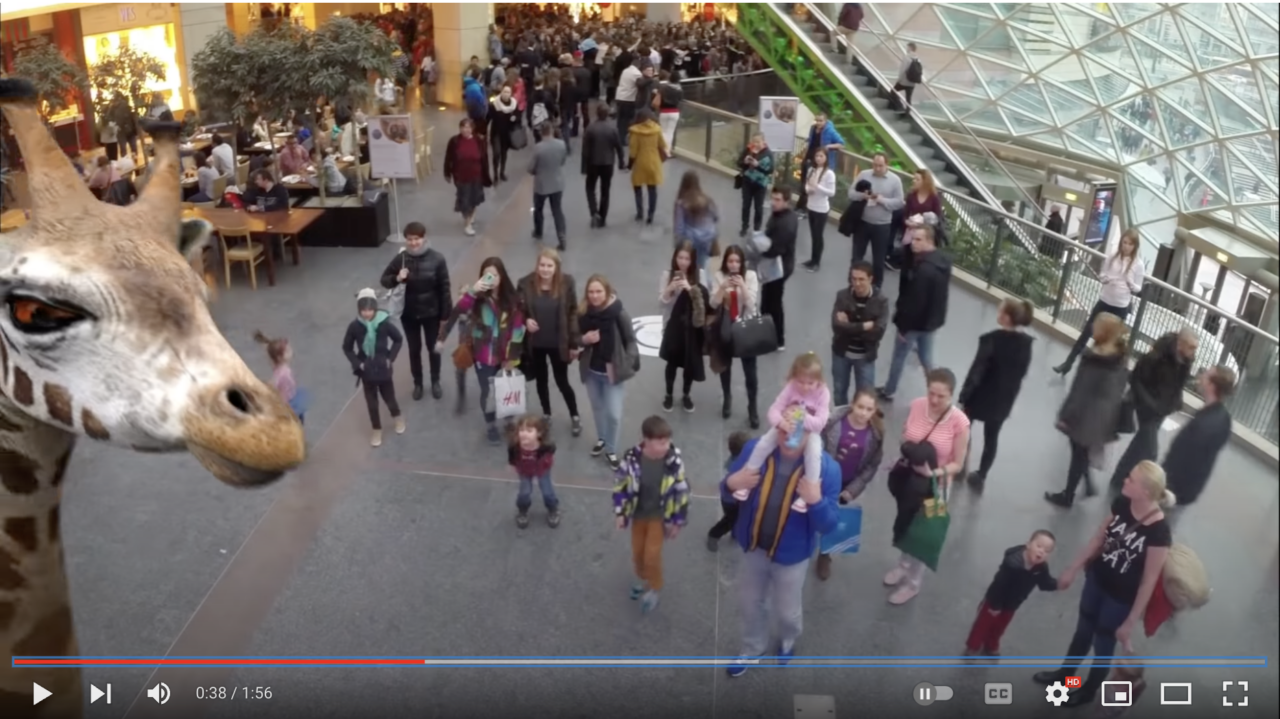Why should you keep an eye on display advertising trends? Well, with many types of digital ads, it can be difficult to know where you should invest your ad dollars.
But advertisers shouldn’t forget about the power of display advertising.
While we can expect to see past years’ trends continuing in 2024, the new year will also bring more technological innovations, market changes and privacy concerns.
In this post, we’ll take a look at the top 13 display advertising trends that are commanding attention and that you might want to include in your marketing strategy.
Single Grain enables us to increase our impact without increasing our headcount
13 Display Advertising Trends to Keep an Eye On
Display ads make up 12% of website traffic, making this a core advertising strategy for any marketer. Here are the trends you should keep an eye on this year.
1) Increased Spending
In 2022, display ad spending reached 63.5 billion USD:

This year, display ad spend is expected to surpass search advertising. Therefore, advertisers should also expect to increase their display ad spend in 2024.
What’s causing this trend? A few things, such as:
- Video advertising still dominates, though newer formats are becoming more popular.
- Social media video advertising is especially integral since spending is expected to reach $79.28 billion in 2024.
- Programmatic advertising is available on multiple display channels and can help your brand stay on budget.
Plus, other forms of social media, in-app, and influencer advertising make up the bulk of display ad spend.
2) Dynamic Creatives
Even though more marketers are investing in display advertising, this ad format has downsides. For example, some display ads worsen the user experience and result in “banner blindness.” This is why more advertisers are taking a step up with ad creation by investing in dynamic creatives.
With dynamic creatives, advertisers use consumer data to implement creative elements that appeal to the audience better. Creatives can vary by ad, but usually include a combination of copy, visuals and the products featured.
There are many reasons to invest in dynamic creatives. Creative display ads integrate better into various social media platforms, notably Facebook, Instagram and Snapchat. These social media channels offer limitless opportunities to create eye-catching ads to increase conversions.
Guitar Center did this well by advertising Eric Clapton’s Crossroads Guitar Festivals to their students. The bright colors on the ad and large font stand out, enticing new musicians to sign up for lessons:

3) Multichannel Programmatic Advertising
While digital ad spending is increasing, advertisers must still be smart about their investments. This is where programmatic advertising comes in:

With programmatic ads, marketers can automate the process of buying ad space. This way, you can use programmatic ad spend to stay on budget while making your ROI.
Creating a display ad budget is essential for all businesses, especially SMBs. The average small business spends 35%-40% of its entire budget on various marketing activities, and programmatic advertising will ensure that SMBs don’t overspend on their ad campaigns.
Since 91.1% of ad spend goes toward programmatic ads, this proves that programmatic advertising will make the most of your investments, improving your ROAS.
What are the latest programmatic advertising trends?
Since there are so many advertising channels, businesses must use a multichannel approach to programmatic advertising. These channels include social media, email, Google, and in-app ads. If you don’t pay close attention to your spending, it can be easy to surpass your budget.
Various tools, such as MediaMath, can optimize your campaign for numerous channels and display ad types.
4) In-App Ads
Apps have been replacing mobile websites, and the trend is expected to continue:
21% of Millennials open an app over 50X a day
Because of this, app advertising spend reached $336 billion in 2022 and is expected to grow 14% YOY. Advertisers would do well to switch their display dollars from mobile websites to app ad campaigns.
Which apps should advertisers invest in?
Social media mobile advertising is the obvious example – 99% of social media users access the apps, so you’ll reach the most customers by optimizing your display ads for the mobile app.
You should devote your display ad dollars to more than social media apps: 59% of Gen Zs use their mobile phone to access entertainment, with YouTube (and not TikTok!) being the most popular app among the age group. After entertainment, Gen Zs use apps to play games and even do their homework.
There are multiple display ad formats you can use on all these apps. If you invest in YouTube ads, you can choose display image advertising. Take this HelloFresh app as an example. This ad appears while users scroll through their suggested feed, so you can reach YouTube users without uploading video ads.

That said, display video advertising is still a massive trend, as we will discuss next.
5) More Video Formats
Online videos are still popular in 2023, which isn’t expected to change in 2024. The number of online video viewers is expected to reach 3.5 billion.
But advertisers have been investing in video ads for years. What’s changing? In 2024 and beyond, advertisers should pay attention to the style of videos they’re creating:
- 68% of marketers create live-action videos
- 57% create screen-recorded videos
- 55% create animated videos
Why are live-action videos the most popular?
These ads capture real people, events and settings, which makes the video ad more relatable. Since 86% of consumers prefer an authentic brand image, live-action videos will create more trust between you and your audience.
Depending on your brand, screen-recorded video ads are also effective. These are better ad types for explainer and testimonial ads since they tell more than show. You’ll still be able to convey your brand message without the hefty video production budget.
Create animated video ads if you have a bigger video ad budget. These videos are entertaining while also informative, attracting and retaining more viewers.
With numerous social media channels, you have more options than ever to post your video ads. However, advertisers should create these video ad formats:
- Rewarded
- Outstream
- CTV
- Bumper pre-rolls
- Facebook and Instagram
Why do these ad formats generate the most conversions? We can link the social media and rewarded ads to the app advertising trend. Since more users are on social media apps, you’ll attract more users. Meta, in particular, offers numerous video types and a powerful advertising platform to suit any campaign:

With a large chunk of Gen Zs playing games on their phone, they can watch and benefit from a “reward” ad, such as an extra life or more points.
Outstream videos are becoming a common display video ad on blogs and news websites. These videos appear within the text, capturing their attention while reading an article. Since users skip ads on YouTube, bumper ads are popular among advertisers. These are non-skippable and short ads, increasing brand awareness.
Finally, advertisers can grow their audience by using CTV ads. Since 87% of American adults own a connected TV, CTV ads are an effective way to air your ads while users consume their favorite streaming platforms.
6) Contextual Targeting
One of the issues that advertisers face with display advertising is how few people click on the ads. Display ads have an average CTR of 0.1%, so advertisers must be innovative when targeting prospects.
One of the ways that advertisers can do this is by using contextual targeting. This is when the advertising platforms place the ads on specific websites that correlate with the advertiser’s audience, like this example of a contextual ad on The Wall Street Journal’s website:

This ensures that the ad stays relevant and engages users.
More advertisers are generating results from contextual targeting, and this strategy will be worth $562.1 billion by 2030. Plus, it’s easy to create a contextual targeting strategy. Popular ad platforms such as Google Ads can optimize your campaign for contextual advertising.
What are some examples of display contextual ads done well?
Look at this banner ad from Target’s Good & Gather brand as an example. This banner appeared on a double-decker taco recipe on the All Recipes website, inspiring users to visit Target to shop for the ingredients:

7) More Privacy
Privacy continues to be one of the biggest advertising concerns: 99% of consumers agree that privacy is essential when online browsing.
In response, countries globally have created privacy laws, such as Europe’s GDPR.
How is this affecting the marketing industry? Advertisers and marketers can’t collect consumer data using traditional methods like third-party cookies. As a result, they lose a chunk of consumer and audience data.
Advertisers are increasing their budgets to accommodate data privacy changes, especially in mobile advertising campaigns. Many are collecting first-party data instead (which we will cover next). More conversion and attribution tracking tools are becoming more compliant with privacy laws, making it possible to report on various metrics while respecting user data.
Privacy also matters to businesses, specifically when it comes to ad fraud, which is when cybercriminals pose as businesses and gain revenue from false ad clicks. This type of ad fraud costs businesses $120 billion annually. Fortunately, Google is updating its platform to help prevent this.
8) First-Party Data
One of the ways that advertisers are working around data privacy laws is by using first-party data, which is information collected directly from their customers through interactions such as website visits, purchases, app usage, and other voluntary activities.
This data is generally accepted under privacy laws because it is collected with the user’s knowledge and often their explicit consent. It came in response to privacy laws such as GDPR and California’s CCPA, which impact how businesses can use and collect data from third-party cookies.
75% of marketers still rely on third-party cookies, so brands need to start collecting first-party data to aid their campaigns.
What are ways that consumers can collect first-party data? Other than adding a Pixel to your website or social media, businesses collect first-party data through:
- Surveys
- Customer service interactions
- Online chats
- Reviews and feedback
- Social media
That said, building trust is essential when collecting first-party data. Always explain how your business intends to collect customer data and how you’ll use that information.
9) AR and VR
Augmented reality (AR) and virtual reality (VR) continue to be two of the biggest trends in advertising. By 2024, the AR and VR market will be worth $296.9 billion:

Using these technologies in your advertising strategy will create an immersive experience, which engages your consumers.
With display ads, your AR and VR options are limitless. Your consumers don’t need additional tech, like a VR headset, to view your ads.
Take 360 video ads as an example. Camera company Vuze uses 360 films to advertise their products, such as this skydiving video, to promote their products:
With VR video ads, your consumers can view your ad on mobile devices.
Brands can also get creative when using AR in advertising. Visa teamed up with various shopping malls in Poland to create AR animals. The AR technology makes it look like giraffes, elephants and panda bears are in the mall, leaving guests in awe. Users were taking photos of the animal and post them on social media, helping Visa improve its social proof.

10) E-Commerce Display Advertising
In 2022, it’s estimated that e-commerce sales exceeded $5.7 trillion USD. Since e-commerce is so prevalent, online stores have many options when using display advertising based on the marketplace.
Amazon is a global e-commerce giant, and the website generates 1.1 billion visits. If you list your products here, you’ll be happy to know that Amazon ads’ CTRs are 0.36%.
Sponsored display ads are some of the most effective of all of Amazon’s advertising options. Brands that use sponsored display ads see a +15% YOY increase in sales.
In addition to Amazon, e-commerce stores should also take advantage of Google Shopping. While Google Shopping will crawl organic listings and place the best results on the SERPs, there’s an ad section at the top of the results. Google Shopping ads can generate an average CTR of 0.86.
Etsy and eBay have a similar model, where you can sponsor your products as display ads in search results:
- There are over 7 million Etsy sellers, so investing in sponsored display ads is a simple way to increase brand awareness and sales.
- Over 133 million people also use eBay, so sponsoring your listings is an effective way to top the SERPs.
How will these marketplaces deliver these ads? While they’re all different, most will show your listings based on keywords, geolocation, demographics, interest, and retargeting.
11) Interactive Ads
Interactive ads will still reign in 2024, specifically interactive display ads: 81% of marketers believe interactive ads grab users’ attention, which is the perfect solution to banner blindness.
Advertisers have no creative limits when it comes to interactive ads. While polls, quizzes, games and animations are common examples of interactive ads, you can make an ad interactive using the right ad copy and visuals.
Take a look at this ad by Crocs. The ad simply shows a text box over various pink Crocs and accessories. The text has users fill in the blank as to why they love their Crocs sandals. This ad increases engagement by enticing followers to comment with their responses or share the ad.

12) 5G Technology
In 2019, global operators launched 5G technology. Today, 5G is becoming the new norm on mobile devices. With more users jumping on this trend and networks expanding to this technology, it’s estimated there will be 290.5 million 5G-enabled devices.
5G results in faster internet speeds, which improves the user experience in many ways. Advertisers can benefit from 5G because, thanks to high speeds and low latency, display ads will be more sophisticated and less intrusive.
How can advertisers take advantage of 5G display ads?
Because of faster load times, there’s more room for creativity. Live streaming, gaming, AR/VR, and even short film advertising will become more popular.
Certain demographics use 5G more than others, and advertisers should appeal more to these consumers. These include families, young people, and those with higher incomes.
13) AI and Machine Learning
Last but not least, it’s essential to cover the influence that AI and machine learning will have on advertising. Already, 61.4% of marketers use AI in various marketing activities.
While marketing thought-leaders such as Neil Patel predict that AI won’t replace humans, advertisers still use AI and machine learning for various functions.
One of the most effective ways to use AI is to collect and deliver data: 4 in 10 marketers use AI for decision-making since AI can deliver data such as budget, performance, and past trends.
Advertisers also use AI for these other techniques:
- Create ad creatives
- Identify and segment audiences
- Improve ad performance
While creating ads is one of the top ways marketers use AI, there are some setbacks. You can create unique and branded ads with the right keywords, but there are potential copyright issues to note. Using ChatGPT for ad copy can result in non-creative and inaccurate copy.
Use These Display Advertising Trends in Your Campaign
2024 is approaching, and your competitors are already planning next year’s display advertising campaign. You’ll need to follow the latest display advertising trends to ensure you’re using your ad dollars toward an effective strategy.
AI and machine learning, dynamic creatives, and 5G are some of the latest trends. Some trends from past years will also come back to the forefront, such as programmatic and in-app ads.
Use these trends in your next display ad campaign to gain leverage for the future.
If you’re ready to level up your content with AI tools, Single Grain’s AI experts can help!👇


